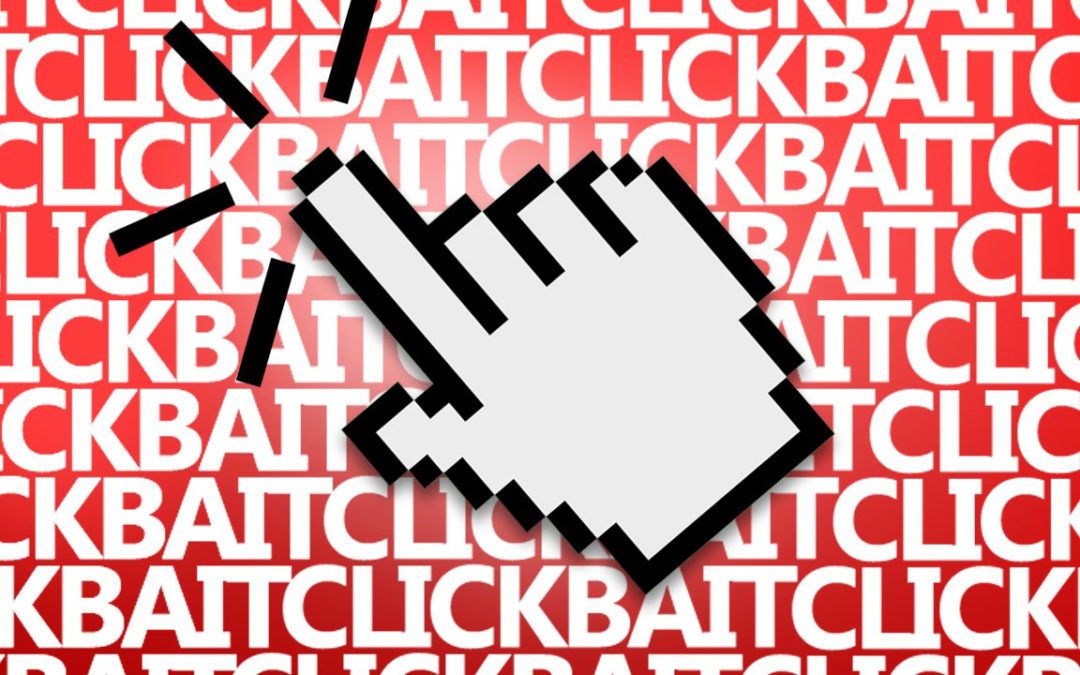The concept of “Fake News” has been one of the biggest buzzwords of the year, and whether we believe it shaped the outcome of our presidential election or we just think it’s there to fill our Facebook feeds with junk, it’s important to understand what it is and why it’s important to spot. By definition, Fake News stories either twist the truth or completely report false information with the intent of getting people to read, share, and believe that the information is true. The articles are often posted on shady news source websites (think National Enquirer or the Globe of the internet) and are shared electronically through social media and e-mail until they gain notoriety and ultimately get coverage by larger news media outlets who mistakenly believe they are fact.
But, why mention this on a blog about computers? It’s all about SECURITY. Clicking on news stories with headlines like “See What Trump Said About Hillary Now” (or other enticing titles that make you want to read more) usually bring you to a website full of similarly-slanted articles, advertisements and pictures that will load on your phone or computer with the intent to keep you reading, clicking on links and sharing. Where the real problem comes in is that often times, those pages are filled with misleading clickbait that leads you to spyware, viruses, and other spam. Visiting those shady news sites often can make pop-ups, toolbars and taskbar notifications install on your machine which open you up to way more problems than just fake news stories. So, how can you spot this trouble before it starts? Here’s some key things to look for:
1. Is it A Credible Website?: Make sure that the source is legitimate website, and not a website with a really long address or obscure extension. Here’s a place to start…blogger Vanessa Otero created a helpful image and discussed it on her site: http://www.allgeneralizationsarefalse.com/?p=65. If you’re not looking at a site towards the middle of the screen, it might be time to find another news source. Sadly, once credible websites like Forbes.com have resorted to using timed advertisements that need to be viewed before going to the article on the site. If you’re seeing “continue to this article in 10 seconds” links, or popups that say “click here to read more”, it’s time to find a new news source.
2. Beware of Advertisements: Advertisements have gotten so completely out of hand lately that they’re almost impossible to avoid, which is why it’s important to learn how to spot them. What seems to be an increasingly common problem is that malware/spyware developers sell legitimate-looking advertisements to marketing companies that manage the ads that display on popular websites. It’s confusing, but sometimes if you see a “too good to be true offer” or extreme advertisement, it’s likely their advertisement provider- NOT the news website- is at fault for the advertisement you’re seeing. The MacKeeper advertisements are another great example, same as the advertisements that look like a mini-game on the page. If advertisements are making it too hard to read the story on the site, it’s not worth reading the story.
3. What Other Articles Are Linked On The Page?: Often at the bottom of clickbait filled or fake news sites, they will have links to “other stories of interest”- or in other words- “other links they want you to click on”. These articles are likely not related to the article you wanted to read on that page, and have catchy taglines like “Following this one simple trick helped me lose 10lbs…”. The pictures and titles are creatively done to make you want to click to read more….and when you do, you’re taken to another website, and you’ve just fallen victim to clickbait.
4. Who Is Sharing It?: We all know someone who emails or shares the links to these virus/spyware laden clickbait style articles. If you see someone has shared something with you, and you’re pretty sure it’s fake, TELL THEM. Check snopes.com to see if that email forward they sent you is really true. If it’s online, consider commenting if you question the source and let other readers question its validity as well. Sometimes, people just aren’t tech savvy enough to know how to spot fake or embellished articles online, and so they share them unknowingly and make the water all the muddier. When you see that next celebrity opening their “box of the month club” in a Facebook live video….realize that they’re being paid to do so, and the intent is that you click on the link and sign up for yours today. It’s also important to consider that maybe your friend sharing articles doesn’t even know they’re doing it. Their account could have been compromised, and now it’s posting on their behalf- same thing with those emails they send that just include a link. When it happens- contact the user right away and have them change their password to prevent more damage. While it might be hard, I urge you to consider restraint when clicking to read articles that are shared online or emailed to you….especially if the sender is notorious for it.
5. Look For Facts!: Lastly, if you question the facts in the email, look for items you can look up to verify and validate the email. Check the date, the author, or the context with another quick google search and see what comes up. If it’s a quote someone said, google the quote and look for a video with before or after context. That email for a prayer request for the toddler who shot himself with a nail gun totally tugs at our heartsrtings….but a quick check on snopes.com shows us that this story has been circulating for a long time, and there’s little chance it’s relevant anymore, if not real.
So….I ask each of my loyal readers to consider these tips next time you’re catching up with news online, and see if it changed what you share and read!


